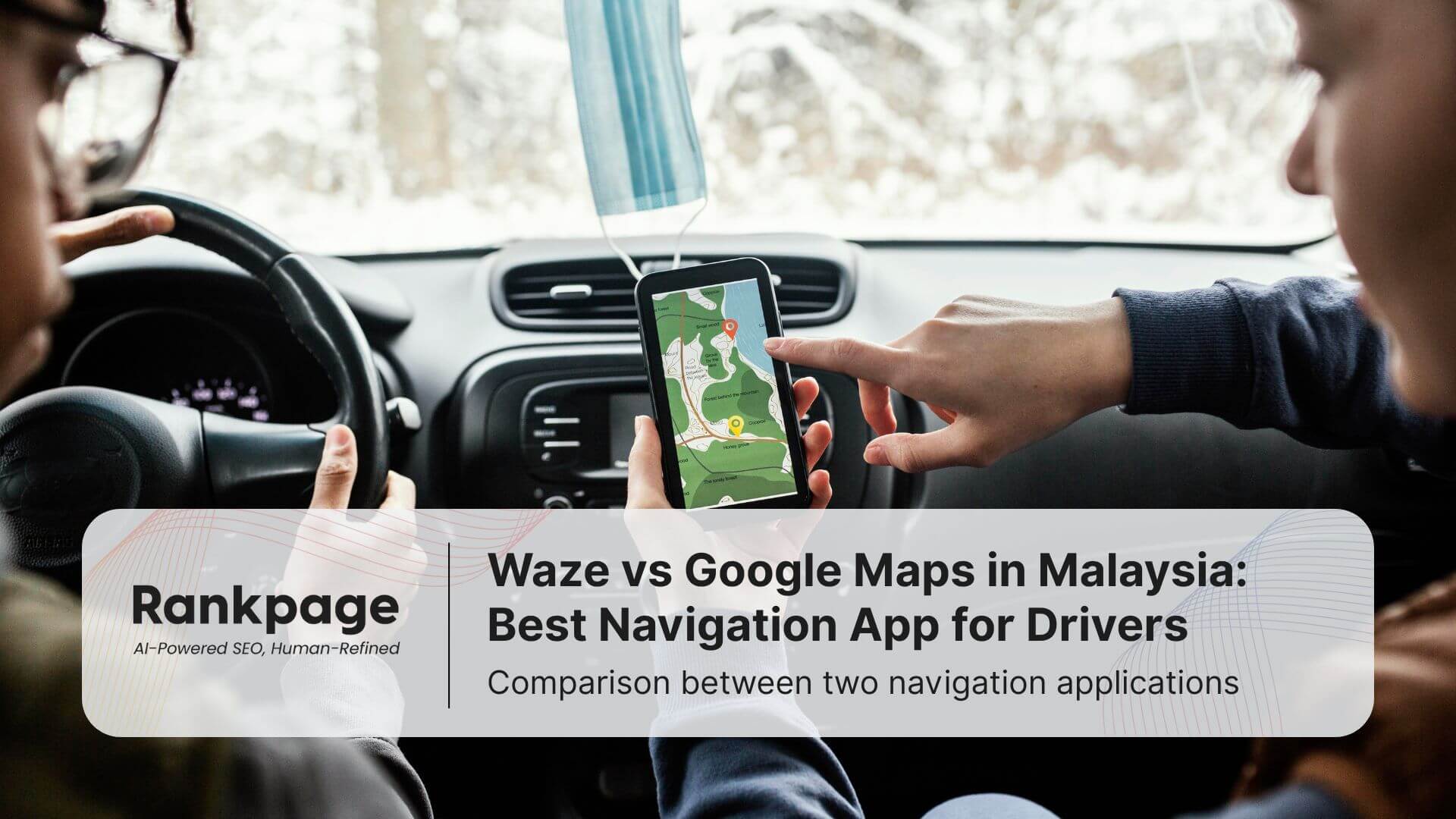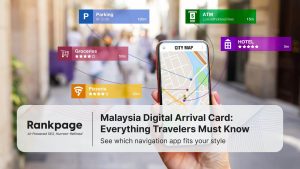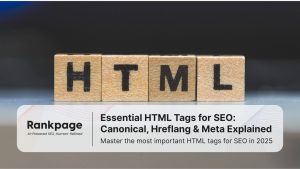Key Takeaways
- Waze wins for real-time traffic and community alerts in Malaysia.
- Google Maps offers offline use and multi-mode navigation.
- Google Maps saves more data and battery on long trips.
- Waze gives faster reroutes; Google Maps gives richer info.
- City drivers prefer Waze, travellers prefer Google Maps.
In Malaysian streets, both Waze and Google Maps excel, but Waze edges ahead with live, community alerts, while Google Maps offers broader transit coverage and offline tools.
If you ever navigate KL’s congested roads or plan a trip across PLUS highways with your friends, you know that your navigation app is quite literally your lifeline. But beyond the “turn left” prompts and speed trap alerts, which one is better?
We wondered the same, and that’s why this guide exists. Below is your side-by-side breakdown of alerts, accuracy, offline features, data usage, voice support, and which app fits your driving style best.
Table of Contents
Quick Comparison: Waze vs Google Maps in Malaysia (2025)
Feature | Waze | Google Maps |
Best For | Real-time traffic alerts, police traps, jam dodging | Offline maps, public transport, long-distance routing |
Key Features | Community reports, live rerouting, traffic camera alerts | Offline downloads, lane guidance, multi-mode navigation |
Pros | Fast detours, user-driven alerts, great in KL congestion | Reliable data, works offline, supports transit & walking |
Cons | No offline mode, drains more battery | Fewer live alerts, slower rerouting in jams |
Data Usage | Higher (0.7–1MB per 10 mins) | Lower (0.5MB or less when offline) |
Offline Use | ❌ Not available | ✅ Available (download by region) |
Toll Road Support | Real-time community reports on PLUS, DUKE; shows community-sourced toll info. | Includes toll pricing, but no user alerts |
Voice Guidance | Bahasa Melayu / English (less multilingual support) | Bahasa Melayu / English / Mandarin / Tamil supported |
Ideal User | Klang Valley commuters, short city trips | Rural drivers, travellers, transit users |
Waze
Built for the real-time driver.
Waze is designed for drivers who need on-the-go updates. The app thrives on community input and drivers report everything from accidents and roadblocks to police speed traps and potholes.
This collective intel helps other users adjust their routes instantly, making it highly responsive in urban traffic chaos (or when roadblocks appear out of nowhere).
Users frequently praise its ability to dodge unexpected bottlenecks on roads like Jalan Tun Razak or the Sprint Highway.
“Waze shines during rush hours, holiday balik kampung traffic, and anywhere users are actively sharing updates.”
Google Maps
Reliable, multi-mode route planner.
Google Maps is a staple navigation app that goes beyond just driving, it also supports walking, cycling, and public transport.
This makes it a better fit for those who use a mix of LRT, MRT, and buses, or plan more complex routes.
One of its standout features in Malaysia is offline maps. You can download entire regions, like Kuala Lumpur, Langkawi, or even Gua Musang,and navigate without mobile data.
This is ideal for rural travel or areas with weak mobile coverage.
It also includes turn-by-turn lane guidance, estimated toll pricing, and integration with services like Grab or KTM Komuter.
“Google Maps may not have the hyper-local alerts that Waze does, but it offers a steadier, data-backed route experience.”
Data, Battery & Offline Use
Waze uses more mobile data and battery. This is because it constantly uploads and downloads traffic data, which:
- Consumes more battery over long drives
- Uses 0.7–1MB per 10 minutes
- Drains faster if running other apps (Spotify, WhatsApp)
Google Maps is better for data-capped plans. Thanks to its offline mode and efficient routing, it:
- Uses less data (0.5MB per 10 mins)
- Allows full region downloads for offline use
- Saves battery on longer trips or low-power model
If you’re heading to rural areas or want to save battery/data, Google Maps is the safer bet.
Voice, Language & UI Preferences
Both apps support Bahasa Melayu and English voice directions.
But only Google Maps:
- Supports more languages (Mandarin, Tamil)
- Integrates with Google Assistant for voice commands
- Offers clearer pronunciation and real-time input
Waze is more visual and driver-focused. Its simplified UI includes:
- Big, bold hazard icons (speed traps, jams)
- Less screen clutter, easy to scan while driving
- Quick-glance routing ideal for short city trips
But if you ask us, Google Maps is better for planning. For those who want map detail, it provides:
- Lane guidance, street names, landmarks
- Indoor maps (KLIA, malls)
- Business listings, reviews, and hours
How to Decide:
- Want a no-fuss interface for live driving? → Go Waze
- Need richer features and voice flexibility? → Choose Google Maps
What About Speed Traps, Toll Rates & Enforcement Zones?
Waze gives real-time alerts on road traps and jammed tolls.
If you’re driving through busy areas like KL, PJ, or the PLUS Highway, Waze offers user-reported updates on:
- JPJ and police roadblocks
- Toll congestion (Sungai Besi, Damansara)
- Speed camera zones (including temporary traps)
Google Maps shows toll costs, not toll problems.
It estimates pricing and expected tolls but does not warn you of sudden slowdowns or camera enforcement ahead.
Example: A user near Penang Bridge was alerted by Waze 5 minutes before a full roadblock, Google Maps had no warning.
Which App Is Easier to Set Up and Use Daily?
Here’s a setup-and-usage comparison for the average Malaysian driver:
Task | Waze | Google Maps |
Set home/work location | In-app shortcut | Syncs via Google account |
Customise traffic alerts | Speed traps, hazards, traffic cameras | Limited, reroutes only |
Save favourite places | Tap to add Favourites | Starred or labelled places |
Adjust voice guidance | Fun/custom voices available | Standard voices, better pronunciation |
Bahasa Melayu support | Good, user-friendly | Excellent, with better assistant commands |
Walk + transit + bike routes | Driving only | Multi-mode routing built in |
Verdict:
- Waze is more customisable for drivers
- Google Maps is better for multi-mode travellers and planners
Point of Interest Accuracy: Where’s the Nearest Petrol, Mamak, or Mee Tarik?
Your navigation app becomes absolutely important when you’re hungry, running low on fuel, or need to find a rest stop fast.
It doesn’t matter if you’re doing a late-night Grab shift or on a balik kampung drive through R&R stations, POI (point of interest) accuracy matters. Here’s what we found when comparing both apps.
Petrol Stations Near KLCC (10PM Test)
Search Query: “Petrol stations near KLCC” on a Wednesday at 10pm.
Metric | Waze | Google Maps |
Results shown | 5 stations | 8 stations |
Open stations (verified) | 2 open, 1 permanently shut | 6 open, all with hours shown |
Additional info | Limited details or outdated entries | Live hours, user reviews, traffic estimates |
Winner: Google Maps. More complete, up-to-date listings, and live operational status.
Highway Stops: Which App Finds the Best R&R?
Search Query: “Rest stop on PLUS Highway” or “R&R Tapah”
App | Result Quality |
Waze | Found locations, but some lacked reviews, facilities, or hours info |
Google Maps | Showed complete listings with petrol station brands, toilets, surau, fast food options, parking info |
Winner: Google Maps, ideal for balik kampung drivers or long haulers needing to plan ahead.
In Short:
- Use Waze to get there faster.
- Use Google Maps to know what’s there when you arrive.
- Especially when you’re tired, hungry, or low on fuel, Google Maps is your better companion for POI accuracy.
Conclusion: Choosing Between Waze vs Google Maps in Malaysia
Waze and Google Maps both deliver excellent navigation, but they shine in different scenarios.
- Waze is ideal for battling the city’s unpredictable traffic thanks to live, user-reported alerts.
- Google Maps is better for rural navigation, offline routes, and public transport planning.
Choose based on how you drive, where you’re going, and what matters more: real-time alerts or broader navigation coverage.
If you’re like most savvy Malaysian drivers, you might just use both. But just as the right app helps drivers get where they need to be, the right Local SEO strategy ensures businesses appear where customers are already searching.
Visibility, after all, is half the journey and that’s where we, Rankpage shine. If you need local foot traffic or love getting sales from walk-in customers, we have the tools, skills and Local SEO service to put your business on Google maps.
Frequently Asked Questions About Waze vs Google Maps in Malaysia
Which App Gives Faster Route Updates?
Waze offers faster route updates thanks to real-time input from other users. If there’s a jam or roadblock ahead, you’ll know quickly, often before it appears on Google Maps.
Does Google Maps Support Toll Roads In Malaysia?
Yes. Google Maps includes toll roads like the PLUS Highway, MEX, and LEKAS, and even shows estimated toll charges on the route preview. However, it doesn’t provide user-contributed warnings like Waze does.
Can I Use These Apps Offline In Malaysia?
Only Google Maps supports downloadable offline maps with full offline turn-by-turn. Waze needs data to start trips and for reports; it can only continue a pre-loaded route with limited features.
Which App Uses Less Mobile Data?
Google Maps generally uses less data, especially in offline mode. Waze, because of its live reporting and rerouting, uses more data per kilometre.
Do Both Apps Support Voice Directions In Bahasa?
Yes. Both support Bahasa Melayu. Google Maps also offers many additional voices (e.g., Chinese & Tamil in supported regions) and integrates with Google Assistant for voice commands.
Which Is Better For Rural Travel?
Google Maps is better suited for rural or semi-urban areas in Malaysia. It has broader coverage and does not rely on active user contributions, which may be limited outside major towns.





